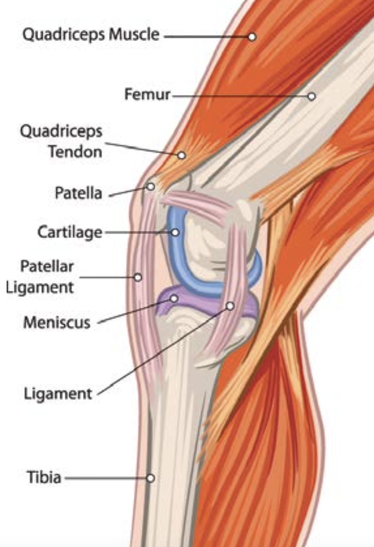|
22/12/2022 0 Comments Know more about your kneesIf you were to take 7500 daily steps over the course of 80 years, you would rack up over 219 million paces in your lifetime. That’s a lot of work for two knees. It’s little wonder they can develop problems and become painful. Knees are prone to a range of issues.HOW DO THE KNEES WORK?
The knees are known as hinge joints. They move (mostly) forward and backward, like the hinges on a door. This type of movement means we can walk, hop, skip and run. But it requires many parts to ensure we remain stable as we move. Each knee is formed by three bones; the thigh bone (femur), the shin bone (tibia), and the kneecap (patella). Ligaments and menisci join these bones together, holding them fast. Cartilage lines the ends of the bones − this strong, rubbery layer stops the bones from grating together. A capsule surrounds the joint and holds the joint (synovial) fluid in. Just like oil in a car’s engine provides a protective coating to stop the engine from seizing up, synovial fluid helps to prevent damage and degradation. The quadriceps, hamstrings, and calf muscles allow the knee to move. When each part works well, our knees do too. They bend while remaining stable and function under pressure. But with so many moving pieces, it’s easy to see why problems can occur. If a part loses strength, or the stress within a knee becomes too much, damage occurs. COMMON KNEE PROBLEMS Common problems include sports-related injuries, damage from accidents, and changes that develop over time like the wear and tear of age-related arthritis. If a ligament or meniscus is torn, the knee can become painful, even unstable. An anterior cruciate ligament (ACL), or medial meniscus tear often happens during sports. The ACL is at risk from fast direction changes, stopping suddenly, and landing after a jump. Menisci are at risk when we pivot, stop suddenly, or squat deeply. These tissues can also be injured from direct trauma or when underlying wear and tear is present. Sometimes the muscles can be weaker or stronger than they should be. This can cause knee pain and problems. For example, in a condition called patellofemoral syndrome, a muscular imbalance changes the patella’s path. Instead of being pulled along the middle of its tract, it’s drawn along the outside. The usual ease of movement is replaced by a painful, bumpy journey. Wear and tear is a common knee problem too; as arthritis sets in, cracks in the cartilage and reduced joint fluid lead to swelling, stiffness, grating and pain. These changes can reduce a joint’s height and allow exposed bone to peek through the cartilage. Ouch! As you can see, the knee is complex. Depending on your circumstances; being overweight, sports, kneeling, poor posture, injury or arthritis could be hurting your knees. If you have knee pain, talk to your chiropractor.
0 Comments
Leave a Reply. |
AuthorAdam's Back is a team of dedicated complimentary health professionals. Our aim is to support you in finding drug-free solutions for better health. Archives
July 2024
Categories |
Search by typing & pressing enter


 RSS Feed
RSS Feed